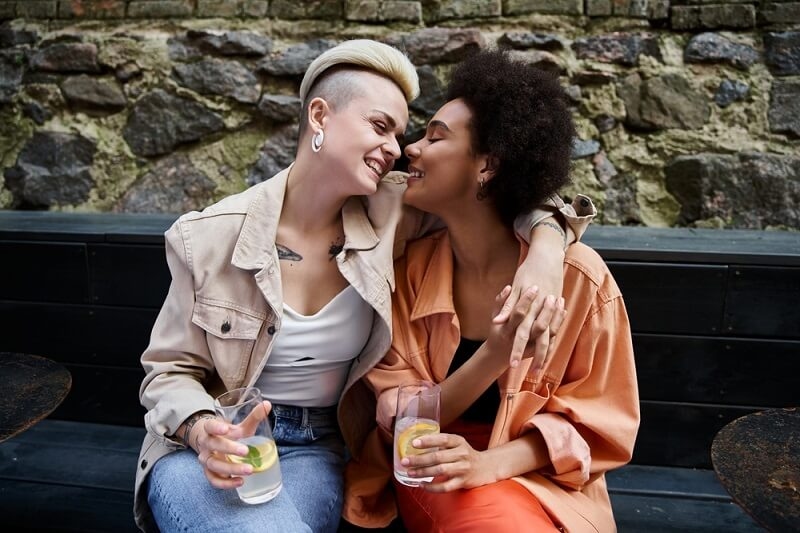Gay Open Relationships: Benefits, Challenges, Best Practices

In recent years, gay open relationships have become more visible and accepted within the LGBTQ+ community. These relationships challenge traditional notions of monogamy by allowing partners to engage in romantic or sexual activities with others outside their primary relationship. Understanding both the benefits and challenges of gay open relationships is crucial for couples considering this dynamic. By exploring the intricacies of open gay relationships, individuals can make informed decisions that align with their desires and relationship goals.
Defining an Open Relationship
An open relationship is a consensual arrangement where partners agree to allow romantic or sexual interactions with others outside their primary partnership. Unlike infidelity, which involves secrecy and betrayal, open relationships are built on honesty, communication, and mutual consent. This transparent approach differentiates open relationships from monogamy, where exclusivity is maintained, and from infidelity, where trust is breached.
In gay open relationships, partners typically negotiate the terms and boundaries that govern their interactions with others. These agreements can vary widely, reflecting the unique preferences and comfort levels of each couple. Common forms of open relationships include:
- Casual Encounters: Partners may engage in occasional sexual activities with others, often without emotional involvement.
- Threesomes or Group Activities: Some couples prefer to include additional partners in their sexual activities together.
- Secondary Relationships: In some open relationships, individuals may have ongoing, meaningful relationships with others while maintaining their primary partnership.
Benefits of Gay Open Relationships

Increased Sexual Satisfaction and Diversity
One of the primary benefits of a gay open relationship is the potential for increased sexual satisfaction and diversity. Engaging with different partners can help individuals explore various aspects of their sexuality, fulfilling desires that may not be fully addressed within a monogamous relationship. This exploration can lead to greater overall satisfaction and a more fulfilling sexual life. This openness and exploration can also complement broader movements towards same-sex marriage equality, promoting diverse expressions of love and commitment.
Improved Communication and Trust
Open gay relationships require a high level of communication and trust. Partners must continually discuss their boundaries, feelings, and experiences to ensure that both parties are comfortable and respected. This ongoing dialogue fosters a deeper understanding and trust between partners, as they must be honest and transparent about their desires and interactions. The need for regular, open communication can strengthen the primary relationship, as partners learn to navigate complex emotions and situations together.
Enhanced Relationship Fulfillment and Personal Growth
For many, a gay open relationship offers an opportunity for personal growth and enhanced relationship fulfillment. The freedom to engage with others can help individuals better understand their own needs and desires. This self-awareness can translate into a more satisfying and authentic primary relationship. Additionally, open relationships can provide a sense of liberation from traditional societal norms, allowing individuals to create a relationship structure that truly reflects their values and lifestyle.
Challenges in Gay Open Relationships
Managing Jealousy and Insecurity
A significant challenge in a gay open relationship is dealing with jealousy and insecurity. Knowing that a partner is involved with others can trigger feelings of inadequacy and fear. Addressing these emotions requires open communication and mutual support to ensure that both partners feel secure and valued. To help foster trust and connection, consider thoughtful gestures and gift ideas for gay men that show appreciation and strengthen your bond.
Communication Breakdowns and Misunderstandings
Communication is crucial in open gay relationships, but it can also be a major stumbling block. Without clear and honest dialogue, misunderstandings and assumptions can lead to conflicts. Effective communication involves regular check-ins and transparent discussions about boundaries and feelings.
Societal Stigma and Internalized Shame
Societal attitudes towards non-monogamous relationships can add another layer of difficulty. Couples in gay open relationships often face judgment and stigma from others, which can lead to internalized shame. This societal pressure can strain the relationship and impact the partners' mental health. Overcoming this challenge involves building a strong support network and fostering self-acceptance.
Balancing Multiple Relationships and Commitments
Balancing time and emotional energy between multiple partners can be complex. Ensuring that all partners feel valued and respected requires careful time management and emotional intelligence. Couples must navigate these dynamics thoughtfully to maintain harmony and prevent burnout.
How to Maintain a Healthy Gay Open Relationship
Establishing Clear Rules and Boundaries
Setting clear rules and boundaries is essential for maintaining trust and respect in a gay open relationship. Partners should discuss and agree on what is acceptable and what is not, ensuring mutual understanding and consent. These boundaries should be revisited regularly to adapt to changing needs and circumstances.
Prioritizing Emotional Intimacy and Quality Time
Even in an open relationship, the primary partnership must remain strong. Prioritizing emotional intimacy and spending quality time together helps maintain a deep connection. Regular dates, heartfelt conversations, and shared experiences are vital for keeping the relationship healthy and fulfilling.
Managing Difficult Emotions Like Jealousy and Insecurity
Acknowledging and addressing difficult emotions such as jealousy and insecurity is crucial. Partners should communicate openly about their feelings and offer support to each other. Developing coping strategies and building emotional resilience can help navigate these challenges more effectively.
Seeking Professional Support When Needed
Sometimes, professional support from a therapist experienced in open gay relationships can be invaluable. Counseling can provide a safe space to explore complex dynamics, improve communication skills, and address underlying issues. Seeking help is a proactive step towards maintaining a healthy and satisfying relationship.
You may also like: 10 Essential Health Tips for Gay and Bisexual Men
Conclusion
Navigating a gay open relationship involves both rewards and challenges. By establishing clear boundaries, prioritizing emotional intimacy, effectively managing difficult emotions, and seeking professional support when necessary, couples can create fulfilling and healthy partnerships. Understanding and addressing the complexities of open gay relationships enables couples to thrive in a non-monogamous arrangement.
FAQs
1. What are the key benefits of a gay open relationship?
Increased sexual satisfaction, improved communication, and enhanced personal growth are some of the key benefits.
2. How can we manage jealousy in an open gay relationship?
Open communication, mutual support, and developing coping strategies are essential for managing jealousy.
3. What should we consider when setting boundaries in an open relationship?
Discuss and agree on what is acceptable, ensure mutual understanding, and regularly revisit these boundaries.
4. How can we deal with societal stigma related to gay open relationships?
Building a strong support network and fostering self-acceptance are crucial for dealing with societal stigma.
5. When should we seek professional support for our open relationship?
Seek professional support when dealing with persistent conflicts, communication breakdowns, or emotional distress in the relationship.
This content was created by AI























